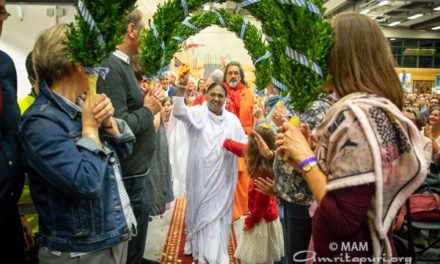 Many yoga practitioners, when they start to delve deeper into their yogic studies, eventually come across Maharishi Patanjali’s Yoga Sutras, a text written between 100 BCE and 500 CE. The most famous section pertains to “Ashtanga Yoga,” where Maharishi Patanjali outlines eight limbs to refine the mind and move towards the goal of Self-realization.
Many yoga practitioners, when they start to delve deeper into their yogic studies, eventually come across Maharishi Patanjali’s Yoga Sutras, a text written between 100 BCE and 500 CE. The most famous section pertains to “Ashtanga Yoga,” where Maharishi Patanjali outlines eight limbs to refine the mind and move towards the goal of Self-realization.
However, another sutra in the text gives yoga practitioners an additional list. What is listed in this sutra? The obstacles we face on the path! Are there also eight parts to this list? Wishful thinking. When Maharishi Patanjali outlines the limbs, he names eight parts. When he speaks of difficulties though, he lengthens his list and mentions nine obstacles:
1) Vyadhi: Physical illness
2) Styana: Lack of enthusiasm
3) Samsaya: Doubt
4) Pramada: Carelessness
5) Alasya: Laziness
6) Avirati: Desire for sense objects
7) Bhranti Darsana: False knowledge, wrong understanding
8) Alamdha Bhumikatva: Inability to concentrate
9) Anavashitattva: Instability, slipping backwards from ground gained.
Sound familiar? Well, they should! Every spiritual seeker faces these obstacles. They verily define the spiritual path.
Initially, this sutra may seem daunting or discouraging to a practitioner. It can be a source of great comfort though. Remember, this sutra was written over 2,000 years ago. This means that yogis faced the same inner struggles during Maharishi Patanjali’s time as we face today. They come from within the human mind and are an integral part of the spiritual path.
Studying, acknowledging, understanding, and expecting these obstacles build confidence in the path and ourselves. If we expect the spiritual path to be smooth, what will happen when problems arise? We will think we’re doing something wrong and stop. But if we understand that they are an essential part of the path, it will be easier to continue practicing even when they come up.
No matter what our goal in life is, these nine obstacles will be faced. If we aim for enlightenment, if we want to practice yoga every day for a year, or get a PhD, or even bake a cake, obstacles come up. The greater the goal is, the greater the challenges are to get there.
So, how do we deal with them? How do we overcome obstacles?
First of all, we must understand that, essentially, the obstacles are not the problem. The problem is how we react and respond to the obstacles. When they come up, most people use them as an excuse to stop practicing.
Let’s say I’m sitting for bhajans, devotional singing, and don’t feel any enthusiasm, so I get up and leave the hall. Was the problem my lack of devotion? No—the problem was my running away from it. Or I’m doing my seva, selfless service, and I feel lazy, so I stop early and go back to my room. What went wrong? It’s totally normal to feel lazy. Actually, the seva is meant to help me move through the laziness. Or, what if I’m sitting for meditation and I can’t get any concentration, then how do I deal with this?
We have to have faith in the importance of effort. Sometimes the practices are sweet and we do feel devotion or concentration. But more often than not, these obstacles are present. Luckily, the main purpose of spiritual practices is to make us aware of the mind. In this way, even when there are obstacles, our efforts can benefit us.
Amma says: “If you take just one step towards God, God will take 100 steps towards you.” So, if I think I need concentration to meditate, then I probably will not practice very much. I have to expect dry periods. In order to not let these obstacles throw me off the path, I have to have faith in the importance of effort.
Sometimes Amma talks about the value of having love for the goal. Having love for and focus on the destination helps overcome all the difficulties that arise on the journey.
It is important to study the obstacles in order to become aware of them. Then, when they come up, we can recognize, “Ok, here is doubt. Here is desire for sense objects. Here is slipping backwards. I knew this would happen. Now, I’ll keep going.”
Just as the waves in the ocean will never subside so that we can take a swim, we cannot wait for the obstacles to cease before we dive forwards. Expecting the obstacles, having awareness, making effort, and keeping focus and love for our target are the ways to move through them.
As Henry Ford once said, “Obstacles are those frightful things you see when you take your eyes off the goal.”
Author: Devapriya Jessicah Marks




